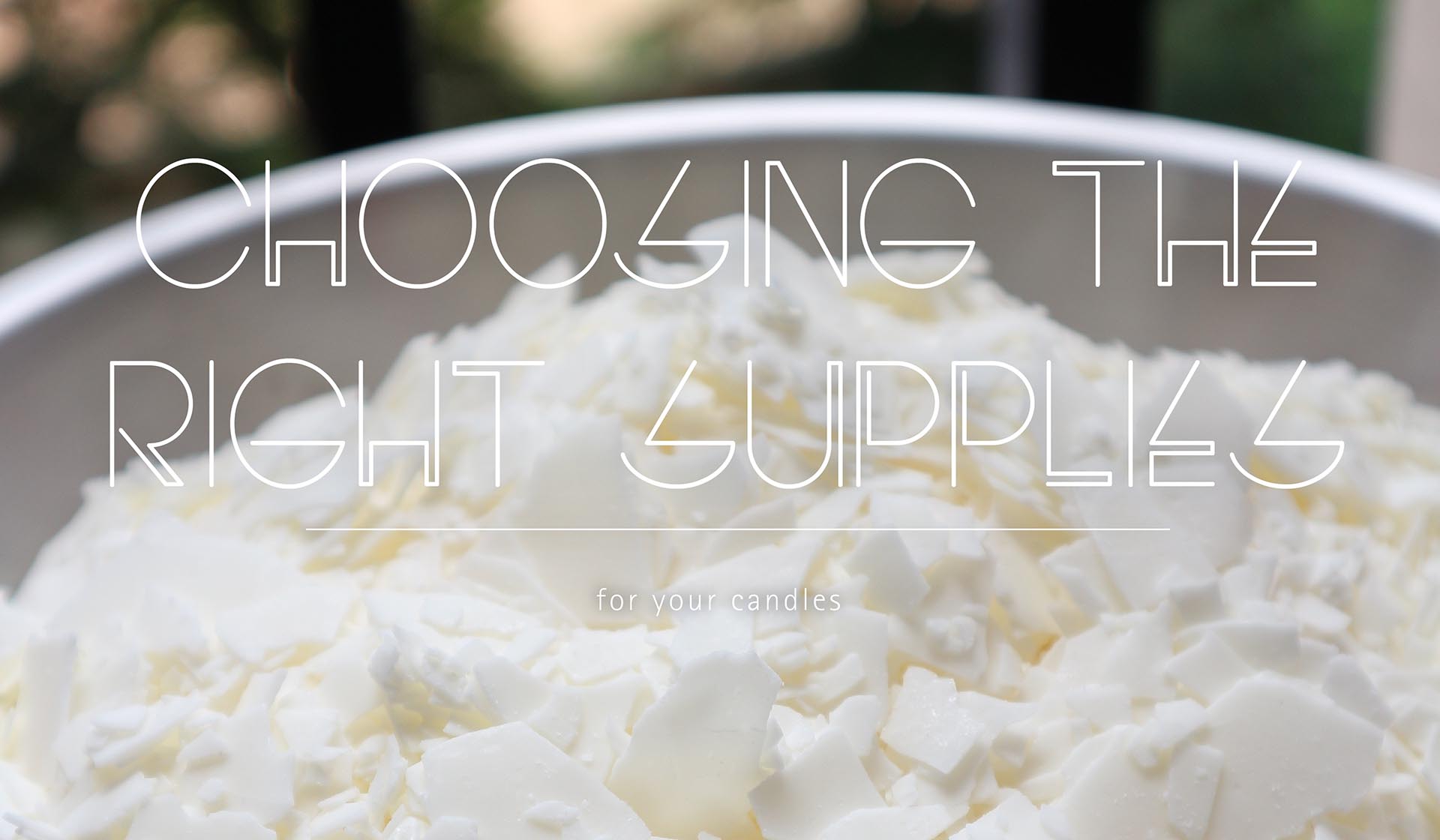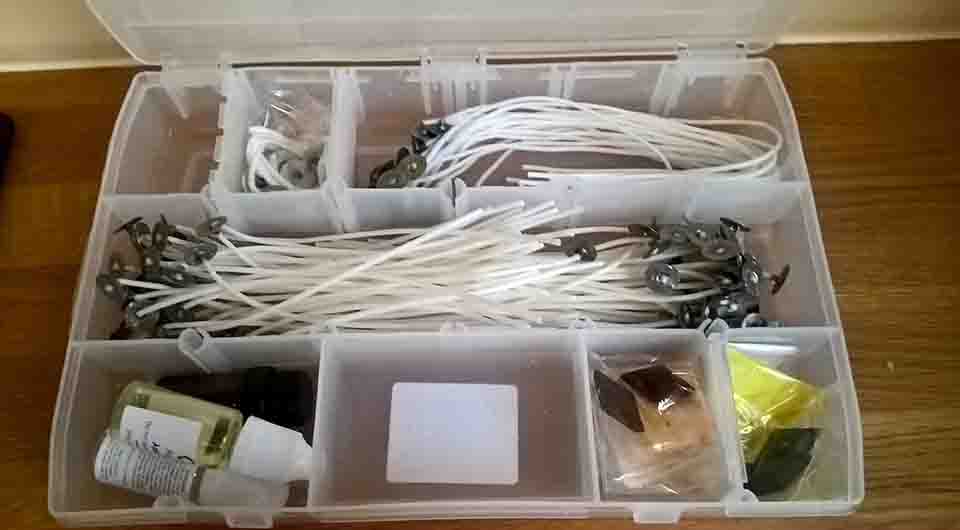CHOOSING THE RIGHT SUPPLIES FOR YOUR CANDLES

From wax to wicks to jars and labels, choosing the right supplies can make or break your customer’s experience of your product. It’s important to put some forethought into the supplies you use to create your candle products. Making the wrong decisions can negatively influence your customer’s confidence in your products and ultimately harm your reputation.
There are several factors to consider before you even pour your first candle, including:
Choosing your wax
The most popular candle wax for professional candle makers is paraffin. Paraffin wax is non-toxic and approved by the U.S. Food and Drug Administration in a variety of products including food and medicines. Many candle manufacturers use food-grade paraffin wax in their products.
Other wax options include:
- Soy wax
- Beeswax
- Palm wax
- Synthetic wax
- Gels
Quality candles burn cleanly and safely so one choice of wax isn’t better than any other. Waxes and wax blends are used based on the type of candle you plan to make and according to the candle maker’s specific preferences.
Choosing your wicks
Choosing the right wick for your candle may be one of the most confusing parts of the candle making process. The wick of your candle is what feeds the melted wax to the flame of the candle. Without a reliable wick, your candles will not burn properly.
Wicks will be selected by the shape and size of the candle, the wax you plan to use, the color of the candle, and the fragrance you plan to add to scent your candle. You may need to experiment with several wick types to find the most suitable for your product.
There are several varieties of wicks most often used in candle making, each with a different coating. These wick types include:
Round Direction Wick
This wick contains a cotton core with tension threads. It is designed to achieve an optimal burn in scented votives and container candles. This wick type works well with both soy waxes and paraffin.
High-Tension Paper Wick
This type of wick contains a paper core that provides the wick with rigidity. They are commonly used in votive and container candles.
LX Wick
This wick offers a flat, braided surface with stabilizing threads to help the wick curl as the candle burns. These wicks are most used for pillar candles as well as votives and container candles. They are a good choice for use with palm waxes and soy.
Zinc Wick
Zinc wicks offer stability during the hot-pour process. While they are strong and useful in paraffin wax container candles, they do give off carbon deposits (soot) and are prone to blooming during the burning process.
Some candle makers utilize a two or three-wick system to ensure candles burn more evenly. Depending on the candles you choose to create, you’ll need to consider the wicks that are compatible with each type of candle, and how long each should be to fit your candles appropriately.
Choosing your jars
There are three essential things to look for when choosing an appropriate candle jar for your container candles, including:
Jars that won’t break or crack
Glass candle jars should be designed for candle usage to ensure they are heat-resistant and able to withstand high temperatures from heat and melted wax. Breaks or cracks can lead to hot wax spills on your customer’s table or carpeting. Gel candles in particular have a history of becoming so hot that their glass containers explode.
Jars that won’t leak
Leaking candle jars create a fire hazard in addition to a waxy mess. When the wax leaks out of its container, the wick no longer has a pool of wax from which to draw fuel. This creates a large flame that can burn high enough to catch nearby curtains or plants on fire.
While you may be tempted to buy uniquely-shaped or styled jars, you must ensure the containers are heat safe and candle-ready. If you plan to store your candles in tins, the same rules apply.
Glass candle jars should be designed to tolerate high heat and melted wax without becoming damaged. It’s also important to know that any glass container, including heat-safe jars, can crack at high heat levels. This is why it’s important to provide your customers with safe candle-burning tips such as burning only on heat-resistant surfaces and never leaving a burning candle unsupervised.
Scenting your candles
A popular choice among candle buyers are the scented varieties. In a scented candle, when the wax is drawn into the wick, water vapor and carbon dioxide are produced and a small amount of fragrance is released into the air.
Fragrances used in candles must be safe and approved for use in candle making. Whether you choose natural or synthetic additives, it is important to ensure they are safe for burning. There are some materials that are toxic to humans, even in small amounts.
Many candle manufacturers use essential oils or fragrance oils to scent their candles. There are a variety of oil scents available and a minimal amount of oil is needed to produce a noticeable scent. A typical measurement for essential oils is one ounce of oil per each ounce of wax.
Fragrances must also be carefully measured, as adding too much of a scent can cause the candle to burn unevenly or unsafely.
Be Confident in Your Ingredients
By understanding what goes into a safe, functional, pleasant-smelling candle, you can ensure you are providing a top-of-the-line product for the consumer. Do your research on the various types of popular candles on the market and get a feel for what kind of scents are popular among buyers.
Source all of your ingredients from reputable manufacturers to have the peace of mind your candles and candle jars are of the highest quality and safe for your candle making business


Very good post. I’m experіencing a few of thesе iseues as well..
I liked your post! Can you please recommend the right heat resistant jar for making beeswax candles?